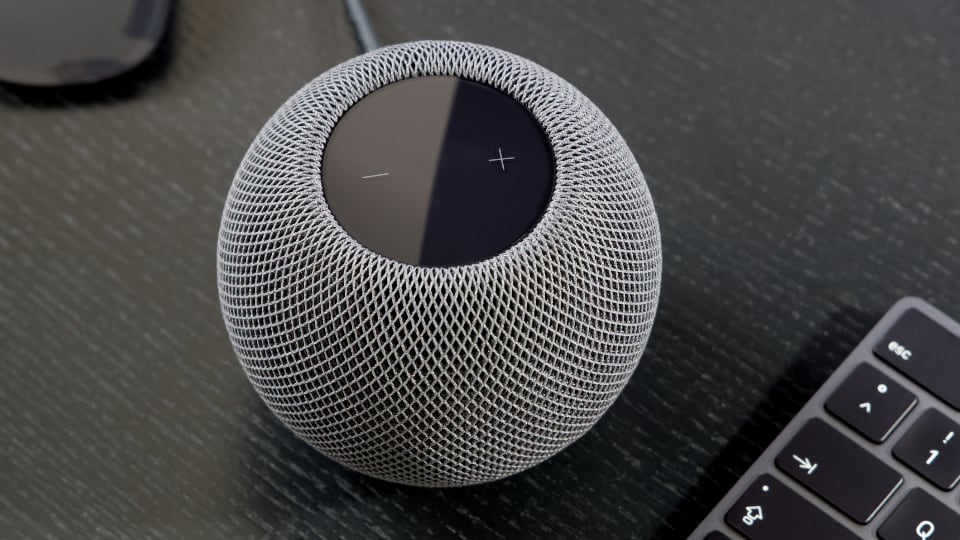
A Border Router is a device that is able to route packets to and from the mesh. This routing happens between the Thread mesh and any other IP-bearing interfaces like Wi-Fi, Ethernet, and Cellular.
Source: Thread Border Router White Paper, Juli 2022
Typical Border Routers
In principle, any product that supports the Thread standard can also be a border router at the same time. It only has to have a constant power supply and contact with the home IP network via Wi-Fi or Ethernet cable. So far, the function is mainly found in smart speakers and smart displays, in smart home hubs and other network devices. Typical representatives include:
- Aeotec Smart Home Hub (SmartThings)
- Amazon Echo (4th Gen.)
- Amazon Echo Show (3rd Gen.)
- Amazon Eero 6 Wifi router
- Amazon Eero 6 Pro Wifi router
- Apple HomePod (2nd Gen.)
- Apple HomePod mini
- Apple TV 4K (2nd Gen. / 3rd Gen. with Wi-Fi + Ethernet)
- Google Nest Hub (2nd Gen.)
- Google Nest Hub Max
- Google Nest Wifi router
- Google Nest Wifi Pro router
- Nanoleaf Lines (Firmware 8.5.2)
- Nanoleaf Shapes (Firmware 8.5.2)
- Nanoleaf Elements (Firmware 8.5.2)
- Samsung SmartThings Hub (v3)
As the list shows, Border Router and the function of a Matter control center often meet in one device. However, this does not have to be the case. The Wi-Fi routers from Amazon and Google or Nanoleaf’s border routers build bridges to the Thread network, but do not have any control functions in the smart home themselves. Whoever uses them to bring Thread products onto the network will also need the smart home hub of a Matter ecosystem for automations or remote access on the go.
The Thread radio protocol is intended as a low-power alternative to Wi-Fi in the Matter standard. It connects devices like battery-powered sensors via a self-enforcing mesh network (more on that in this article). The structure is similar to the Zigbee wireless standard, but there is one major difference.
Simply put, while Zigbee assigns a special 16-bit address to each node on the network, Thread works by directly using the Internet Protocol IPv6. Nodes are assigned an IP address, which makes them easier to approach. In a Zigbee network, the assigned address must first be converted to IP format. This task is usually performed by a gateway, the so-called Zigbee Bridge.
Thread eliminates this conversion. Controllers and other Matter devices can reach nodes in the network directly via their IPv6 address. Prerequisite: The sender or receiver must have access to the mesh. This is usually not the case with Wi-Fi and Ethernet products – smartphones and computers do not “speak” Thread. That’s why Border Routers exist. They establish the connection.
Using a Border Router, Matter devices communicate with each other, regardless of which IP-based network they are on. For example, a Thread switch in Matter directly controls a Wi-Fi lamp without the need for the smartphone app of the Matter ecosystem or a cloud.
Border Router within Matter
With the release of Thread Specifications 1.3.0 in July 2022, Border Routers became vendor-neutral. Devices that meet the specifications are compatible with each other, regardless of where they come from. The goal: Any Thread device should be able to connect to any router – and vice versa. If several Border Routers are installed, communication between the Thread mesh and the rest of the home network is maintained even if individual models go offline. One remaining unit takes over the role of the translator if necessary.
In Matter, however, the ideal of complete neutrality has not yet been achieved. Currently (as of July 2023), there are Border Routers that only work in certain ecosystems. If you combine models from different manufacturers, you may end up with parallel Thread networks instead of a common mesh in which all devices are connected.
This is a result of the way Matter ecosystems manage the access data (credentials) to such Thread networks. Amazon, for example, stores them in encrypted form on its servers and sends them to the device via a secure connection during setup. Apple uses the keychain of iOS for this, Android the corresponding counterpart of its Google Play Services. Samsung has developed Knox Matrix.
To join a Thread network, new Thread devices – including Border Routers – must have these credentials transmitted. If this exchange does not take place within the same ecosystem, but between Apple and Google, for example, one company must share its information with the other – in a secure and controlled manner. Google and Samsung SmartThings have made agreements in this regard, Apple and Google as well.
Amazon currently keeps the credentials of its Thread networks to itself and does not write them into the general keychain of Android or iOS. Therefore, border routers from other brands cannot become part of the mesh network that devices from Amazon build up so far. Nanoleaf explicitly points out this fact in a support documents (link).
Source: matter-smarthome.de
